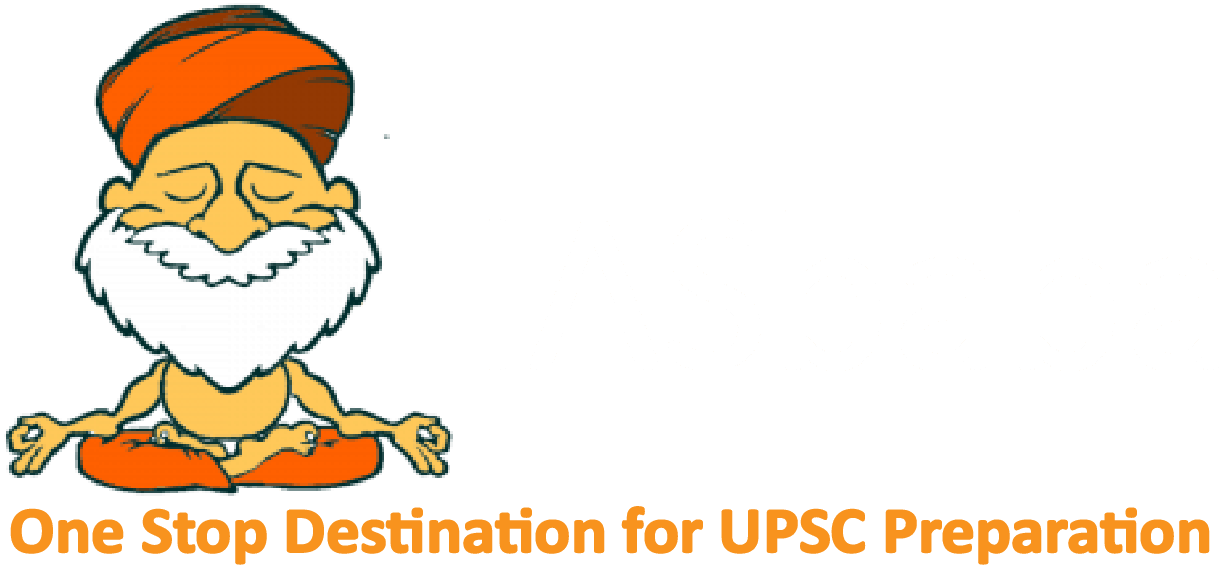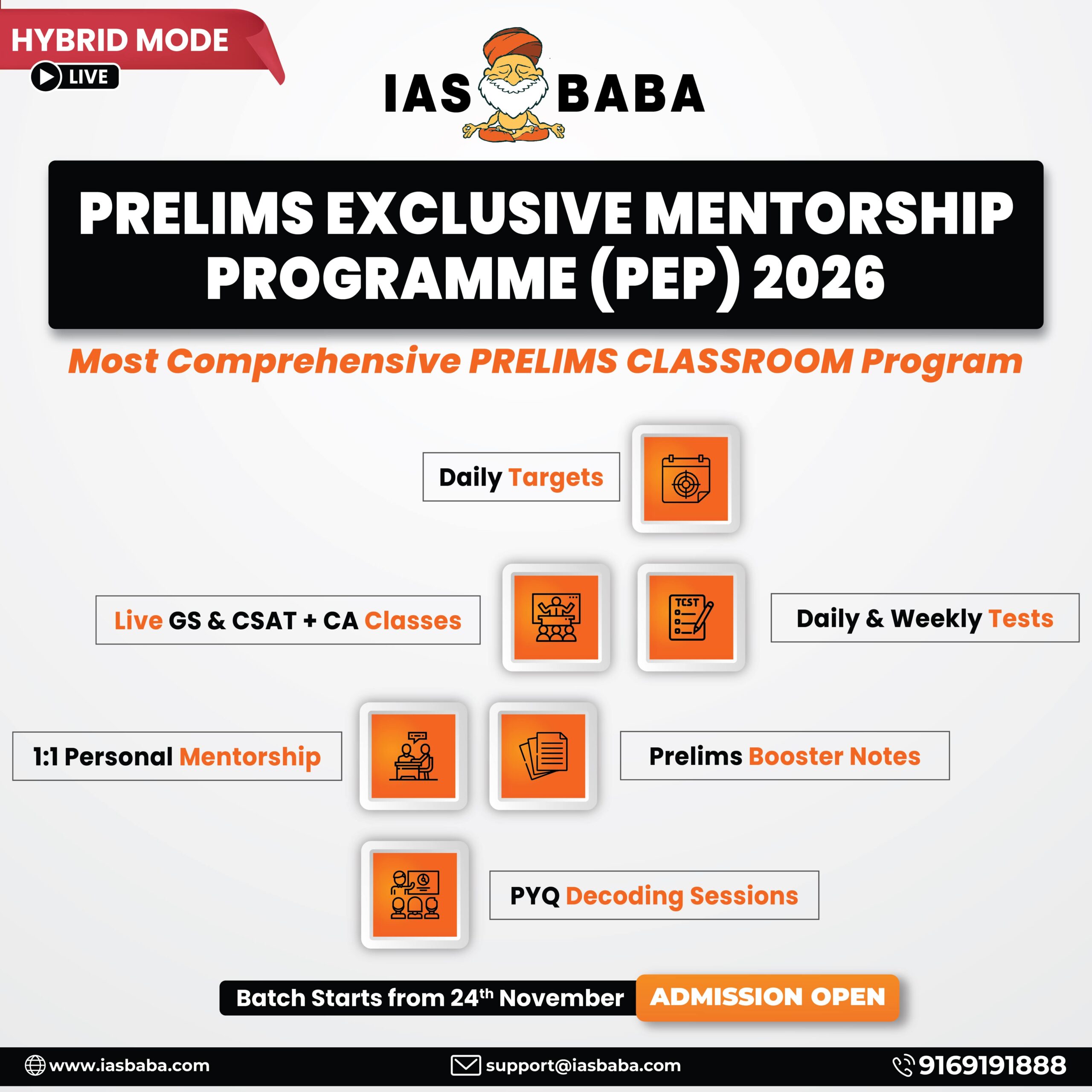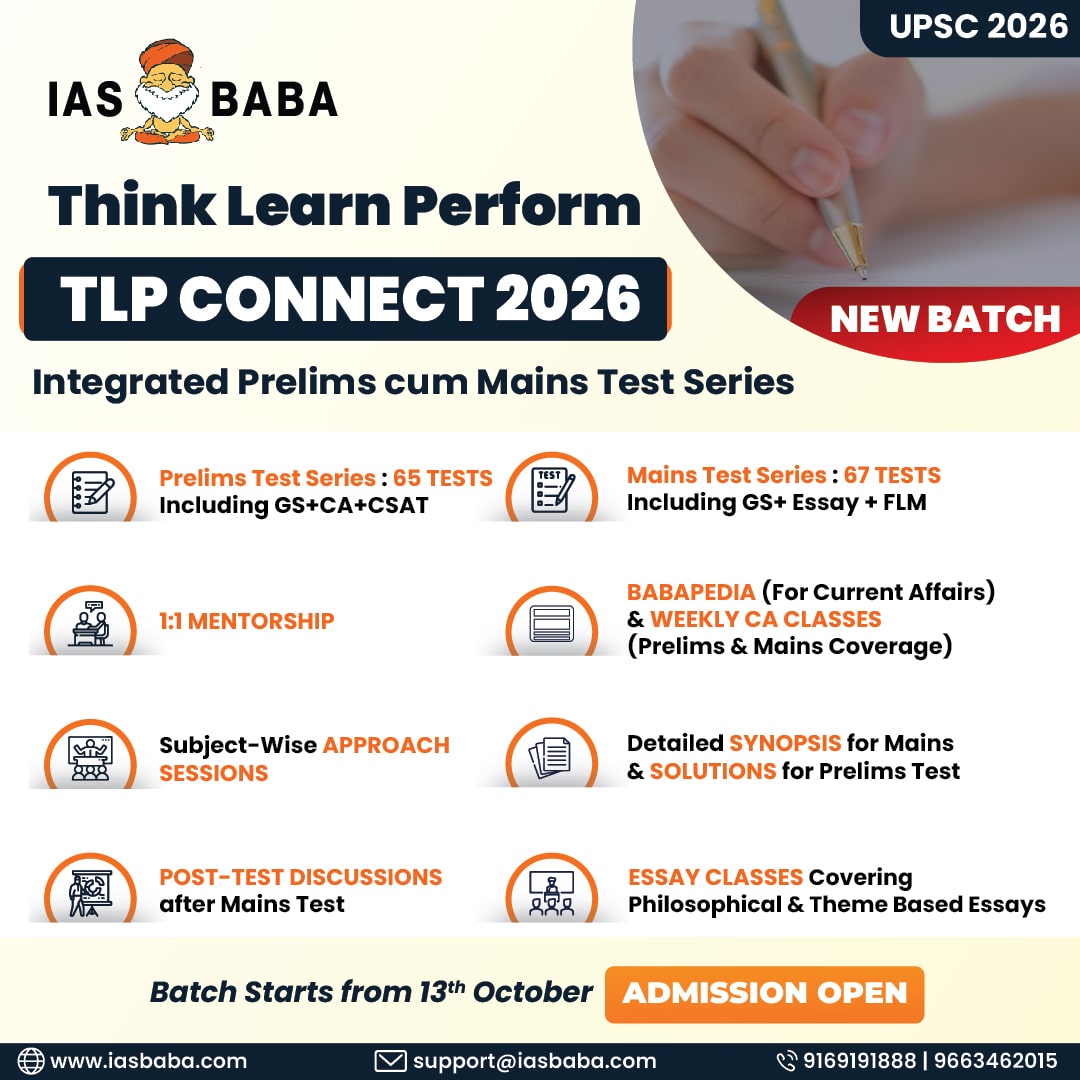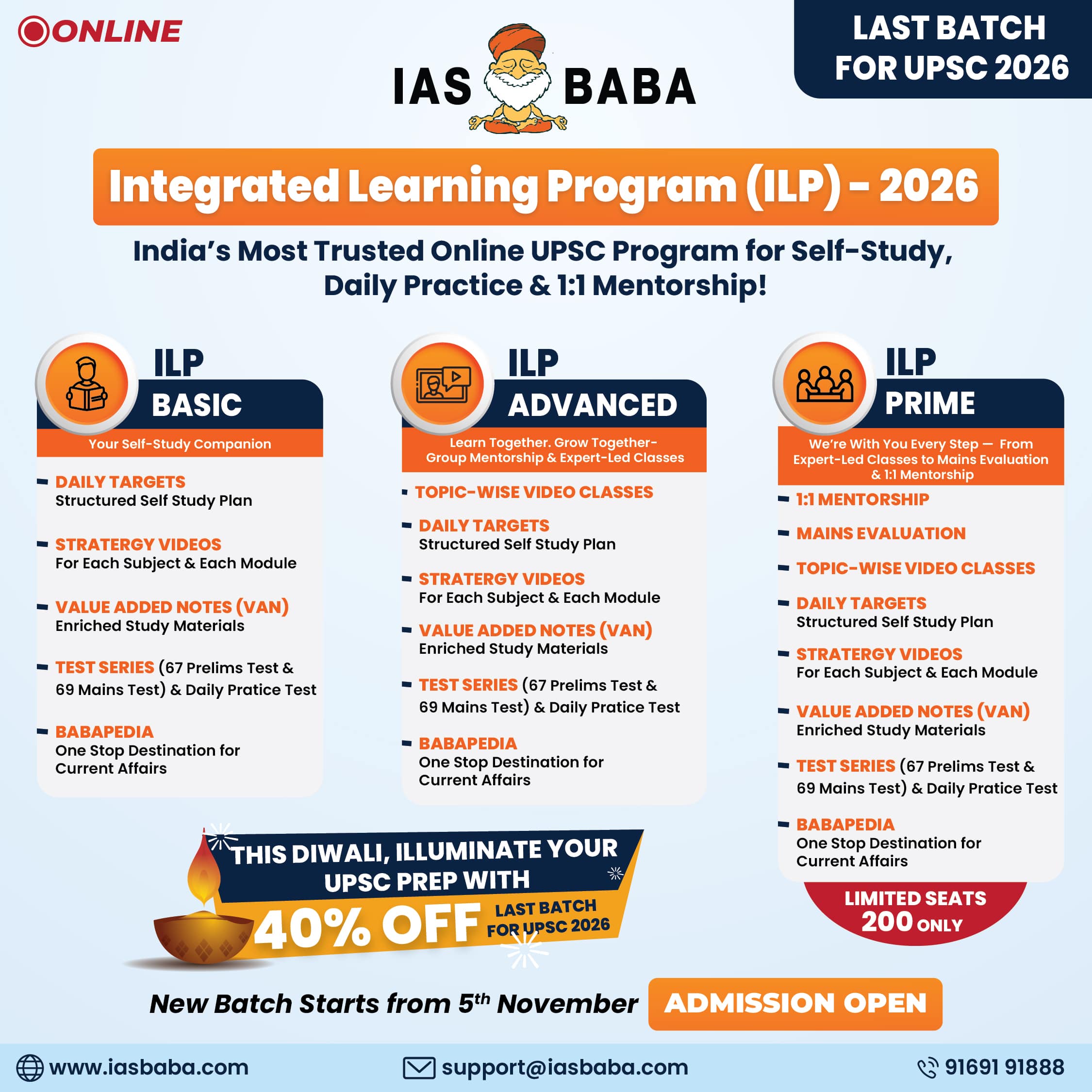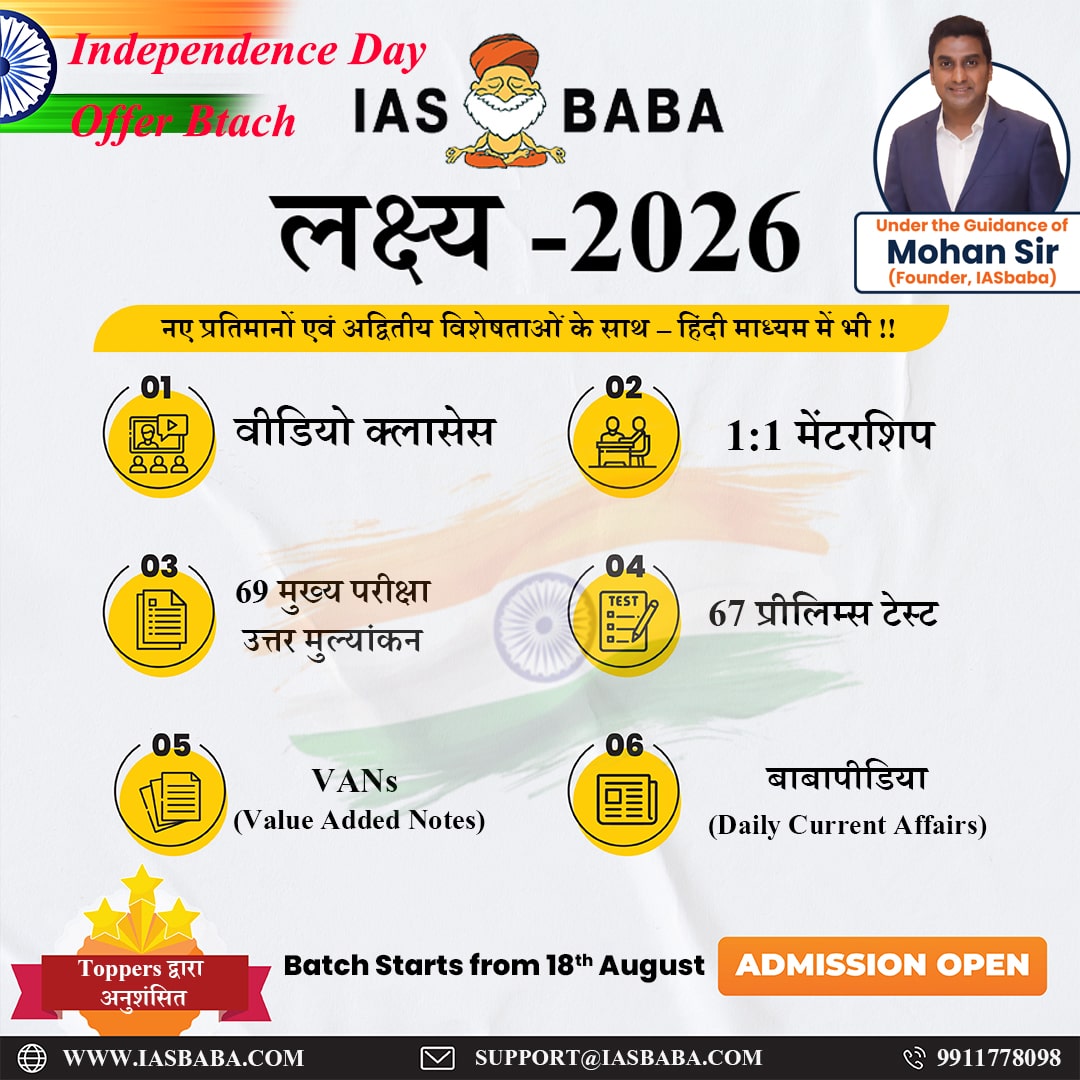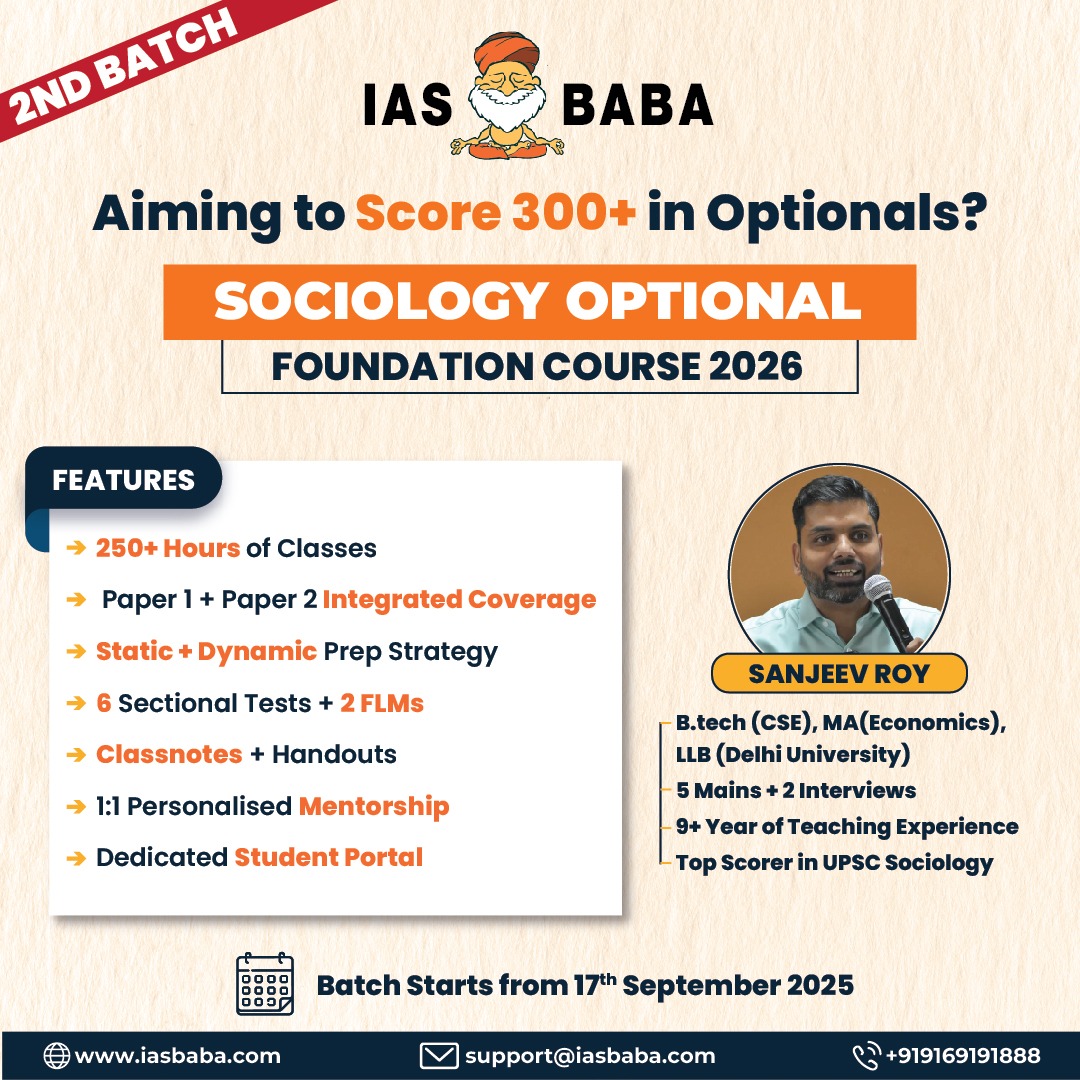IASbaba Daily Prelims Quiz
For Previous Daily Quiz (ARCHIVES) – CLICK HERE
The Current Affairs questions are based on sources like ‘The Hindu’, ‘Indian Express’ and ‘PIB’, which are very important sources for UPSC Prelims Exam. The questions are focused on both the concepts and facts. The topics covered here are generally different from what is being covered under ‘Daily Current Affairs/Daily News Analysis (DNA) and Daily Static Quiz’ to avoid duplication. The questions would be published from Monday to Saturday before 2 PM. One should not spend more than 10 minutes on this initiative.
Gear up and Make the Best Use of this initiative.
Do remember that, “the difference between Ordinary and EXTRA-Ordinary is PRACTICE!!”
Important Note:
- Don’t forget to post your marks in the comment section. Also, let us know if you enjoyed today’s test 🙂
- After completing the 5 questions, click on ‘View Questions’ to check your score, time taken, and solutions.
Test-summary
0 of 5 questions completed
Questions:
- 1
- 2
- 3
- 4
- 5
Information
To view Solutions, follow these instructions:
- Click on – ‘Start Test’ button
- Solve Questions
- Click on ‘Test Summary’ button
- Click on ‘Finish Test’ button
- Now click on ‘View Questions’ button – here you will see solutions and links.
You have already completed the test before. Hence you can not start it again.
Test is loading...
You must sign in or sign up to start the test.
You have to finish following test, to start this test:
Results
0 of 5 questions answered correctly
Your time:
Time has elapsed
You have scored 0 points out of 0 points, (0)
| Average score |
|
| Your score |
|
Categories
- Not categorized 0%
| Pos. | Name | Entered on | Points | Result |
|---|---|---|---|---|
| Table is loading | ||||
| No data available | ||||
- 1
- 2
- 3
- 4
- 5
- Answered
- Review
-
Question 1 of 5
1. Question
- In the context of environmental pollution, which of the following best describes microplastics?
Correct
-
Solution (c)
Explanation:
Microplastics
Definition:
Microplastics are tiny plastic particles less than 5 millimetres in size that originate from the breakdown of larger plastic debris or are manufactured intentionally (like microbeads used in cosmetics and toothpaste).Types of Microplastics:
- Primary Microplastics:
- Intentionally produced small-sized plastics.
- Examples: microbeads in personal care products, industrial pellets (nurdles), synthetic fibres from clothing.
- Secondary Microplastics:
- Formed due to degradation of larger plastic materials by sunlight, waves, and physical abrasion.
- Examples: fragments from plastic bottles, bags, or fishing nets.
Sources:
- Wear and tear of synthetic textiles
- Breakdown of packaging materials
- Tyre and road wear particles
- Cosmetic and cleaning products
- Plastic litter degradation
Environmental Impact:
- Marine Pollution: Ingested by plankton, fish, and other marine species → bioaccumulation and bio magnification.
- Soil Contamination: Micro plastics enter the soil through sewage sludge and agricultural films.
- Airborne Spread: Found in atmospheric fallout and even human lungs.
Human Health Risks: Potential toxic effects due to additives (phthalates, bisphenol-A); studies indicate traces in human blood, placenta, and lungs.
Incorrect
-
Solution (c)
Explanation:
Microplastics
Definition:
Microplastics are tiny plastic particles less than 5 millimetres in size that originate from the breakdown of larger plastic debris or are manufactured intentionally (like microbeads used in cosmetics and toothpaste).Types of Microplastics:
- Primary Microplastics:
- Intentionally produced small-sized plastics.
- Examples: microbeads in personal care products, industrial pellets (nurdles), synthetic fibres from clothing.
- Secondary Microplastics:
- Formed due to degradation of larger plastic materials by sunlight, waves, and physical abrasion.
- Examples: fragments from plastic bottles, bags, or fishing nets.
Sources:
- Wear and tear of synthetic textiles
- Breakdown of packaging materials
- Tyre and road wear particles
- Cosmetic and cleaning products
- Plastic litter degradation
Environmental Impact:
- Marine Pollution: Ingested by plankton, fish, and other marine species → bioaccumulation and bio magnification.
- Soil Contamination: Micro plastics enter the soil through sewage sludge and agricultural films.
- Airborne Spread: Found in atmospheric fallout and even human lungs.
Human Health Risks: Potential toxic effects due to additives (phthalates, bisphenol-A); studies indicate traces in human blood, placenta, and lungs.
-
Question 2 of 5
2. Question
- “Digital arrest” as reported in media commonly refers to:
Correct
-
Solution (b)
Explanation:
Digital Arrest
Meaning:
“Digital Arrest” is not a legal term, but a popular phrase used in media to describe a cybercrime modus operandi where scammers impersonate law enforcement or government officials online and coerce victims into transferring money or revealing sensitive information.How It Works:
- Cybercriminals contact victims through video calls, emails, or messaging apps, claiming the victim’s involvement in illegal activities (e.g., money laundering, narcotics, parcel scams).
- They may display fake ID cards, police logos, or official-looking documents, and sometimes even pretend to confine the victim digitally (“you are under digital arrest”).
- Victims are psychologically manipulated into staying on video call and paying money or sharing OTPs, fearing legal consequences.
Legal Status:
- The term “digital arrest” has no recognition in Indian law.
- The scam falls under offences defined in:
- Information Technology Act, 2000 – sections on cheating by impersonation, identity theft, and online fraud.
- Indian Penal Code (IPC) – provisions on criminal intimidation, extortion, and impersonation.
Incorrect
-
Solution (b)
Explanation:
Digital Arrest
Meaning:
“Digital Arrest” is not a legal term, but a popular phrase used in media to describe a cybercrime modus operandi where scammers impersonate law enforcement or government officials online and coerce victims into transferring money or revealing sensitive information.How It Works:
- Cybercriminals contact victims through video calls, emails, or messaging apps, claiming the victim’s involvement in illegal activities (e.g., money laundering, narcotics, parcel scams).
- They may display fake ID cards, police logos, or official-looking documents, and sometimes even pretend to confine the victim digitally (“you are under digital arrest”).
- Victims are psychologically manipulated into staying on video call and paying money or sharing OTPs, fearing legal consequences.
Legal Status:
- The term “digital arrest” has no recognition in Indian law.
- The scam falls under offences defined in:
- Information Technology Act, 2000 – sections on cheating by impersonation, identity theft, and online fraud.
- Indian Penal Code (IPC) – provisions on criminal intimidation, extortion, and impersonation.
-
Question 3 of 5
3. Question
- Consider the following statements regarding the Central Drugs Standard Control Organisation (CDSCO):
- It functions under the Ministry of Chemicals and Fertilizers.
- The Drugs Controller General of India (DCGI) heads the CDSCO and is responsible for approving new drugs and clinical trials in India.
- CDSCO is the national regulatory authority for pharmaceuticals and medical devices in India.
How many of the above statement(s) is/are correct?
Correct
- Solution (b)
Explanation:
- The CDSCO functions under the Ministry of Health and Family Welfare, not under the Ministry of Chemicals and Fertilizers. Hence Statement 1 is Incorrect
- The Drugs Controller General of India (DCGI) heads CDSCO and oversees new drug approvals, clinical trials, and licensing. Hence Statement 2 is Correct
CDSCO is indeed the national regulatory authority for pharmaceuticals and medical devices in India, ensuring drug quality and safety. Hence Statement 3 is Correct
Incorrect
- Solution (b)
Explanation:
- The CDSCO functions under the Ministry of Health and Family Welfare, not under the Ministry of Chemicals and Fertilizers. Hence Statement 1 is Incorrect
- The Drugs Controller General of India (DCGI) heads CDSCO and oversees new drug approvals, clinical trials, and licensing. Hence Statement 2 is Correct
CDSCO is indeed the national regulatory authority for pharmaceuticals and medical devices in India, ensuring drug quality and safety. Hence Statement 3 is Correct
-
Question 4 of 5
4. Question
-
Consider the following statements regarding the National Security Guard (NSG)
-
It was established by an Act of Parliament in 1986 to provide a federal contingency force against terrorism.
-
NSG is routinely deployed to replace state police forces in regular law-and-order situations.
Which of the statement(s) given above is/are correct?
Correct
-
Solution (a)
Explanation:
- The National Security Guard Act, 1986 provides for constituting a federal anti-terrorism force. Hence Statement 1 is Correct
NSG is meant for exceptional counter-terror and emergency tasks, not regular substitution of state police in day-to-day law-and-order. Hence Statement 2 is Incorrect
Incorrect
-
Solution (a)
Explanation:
- The National Security Guard Act, 1986 provides for constituting a federal anti-terrorism force. Hence Statement 1 is Correct
NSG is meant for exceptional counter-terror and emergency tasks, not regular substitution of state police in day-to-day law-and-order. Hence Statement 2 is Incorrect
-
-
Question 5 of 5
5. Question
-
Consider the following statements regarding the Protection of Children from Sexual Offences (POCSO) Act, 2019:
-
The Act is gender-neutral and applies to all children below 18 years of age.
-
The 2019 amendment introduced the death penalty for aggravated penetrative sexual assault on minors.
-
The Act makes it mandatory for any person having knowledge of a sexual offence against a child to report it to the authorities.
How many of the above statement(s) is/are correct?
Correct
-
Solution (c)
Explanation:
- POCSO defines a child as any person below 18 years of age, irrespective of gender, making the Act gender-neutral. Hence Statement 1 is Correct
- The POCSO (Amendment) Act, 2019 added provisions allowing the death penalty for cases of aggravated penetrative sexual assault on minors. Hence Statement 2 is Correct
Under Section 19, the Act mandates any person to report known or suspected offences; failure attracts punishment under Section 21. Hence Statement 3 is Correct
Incorrect
-
Solution (c)
Explanation:
- POCSO defines a child as any person below 18 years of age, irrespective of gender, making the Act gender-neutral. Hence Statement 1 is Correct
- The POCSO (Amendment) Act, 2019 added provisions allowing the death penalty for cases of aggravated penetrative sexual assault on minors. Hence Statement 2 is Correct
Under Section 19, the Act mandates any person to report known or suspected offences; failure attracts punishment under Section 21. Hence Statement 3 is Correct
-
- Current Affairs Quiz, IAS Daily Current Affairs Quiz, IAS UPSC Current Affairs Quiz, IAS UPSC Prelims Quiz, IASbaba's Current Affairs Prelims Quiz, IASbaba's Daily Quiz, IASbaba's UPSC Quiz, Prelims Current Affairs Quiz, UPSC Current Affairs Quiz, UPSC Current Affairs Quiz IASbaba, UPSC Daily Current Affair Quiz, UPSC IAS Daily Quiz

